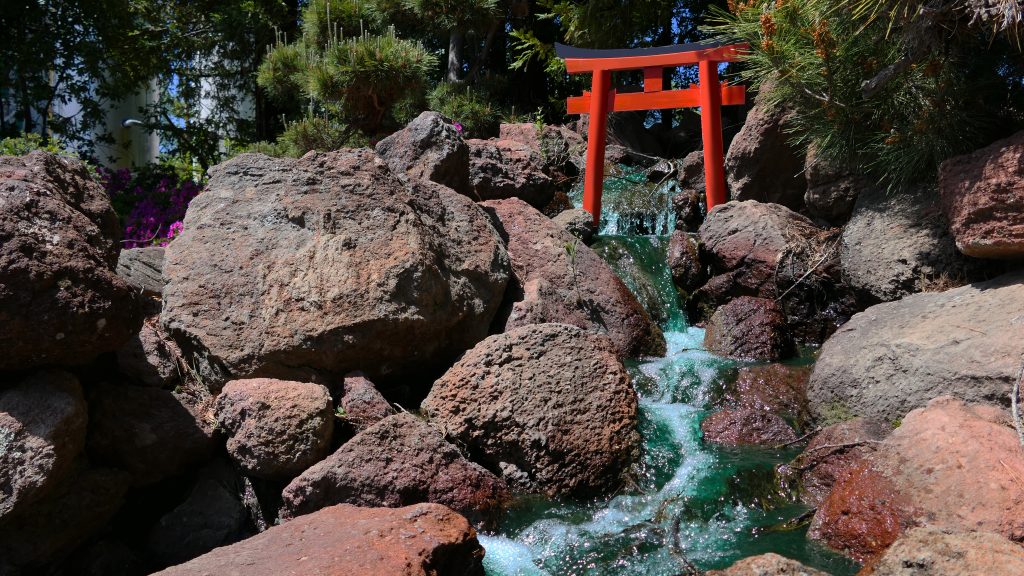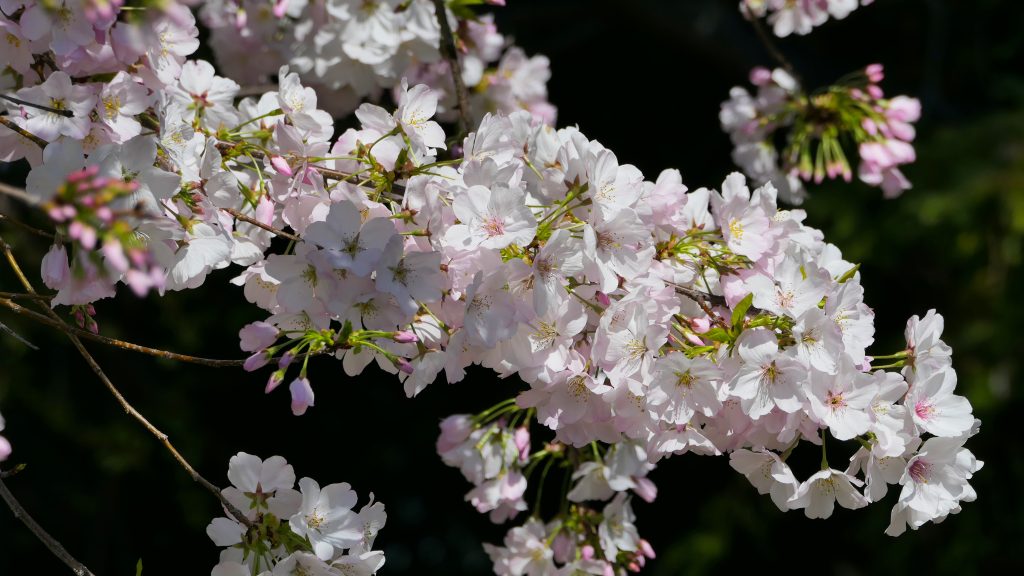
Pond

Often a key focus of a Japanese garden, water can represent many things. From a Buddhist perspective, the water pond of a garden represents the great "ocean" of the heavenly void, while the island in the center represents sacred earth. Water also represents life, and by extension fate, destiny, or fortune. If the Tasting Room building is an island in the pond, perhaps by crossing over the bridge into our Tasting Room you are also crossing over into the spiritual realm, watched over by the sake gods?
Koi carp
Despite technically being an invasive species in many places, koi carp are loved across the world as an ornamental fish. Koi is the original Japanese name for carp, as it was the Japanese who extensively bred them for their colorful scales. Koi feature prominently in Japanese art and culture, not only due to their use in famous garde ponds, but also because ""koi"" in Japanese can also mean ""love"" or ""affection""; the play on words making the fish a symbol of love and friendship.
Today, our koi are less colorful. In the drought conditions of 2022, river otters came from their usual river homes for a vacation in the Gekkeikan garden pond, and helped themselves to the all-you-can-eat koi buffet; we lost two-thirds of our fish. Local herons also visit the pond to eat small koi fry, so the more camouflaged black and grey koi are the ones that remain - a first-hand reminder of the law of natural selection.
Waterfall

Japan is a land of many mountains, and lots of water, and the country is home to more than its fair share of stunning waterfalls. As waterfalls deliver life from above, they are symbolic of life from heaven, and by extension good fortune. Waterfalls often feature in Japanese gardens and are said to be the source of good fortune - especially when placed in the auspicious west or north-west of the garden.
Torii and the Tsukiyama "Mountain"

Mountains are perhaps the most spiritual and sacred of all natural features in Japanese culture. They are simultaneously the home of kami gods, and kami gods themselves. Temples are often referred to as "mountains" as they were historically built as mountain hermitages to find inner peace. Gekkeikan's hometown of Kyoto is surrounded by mountains to the north, west, and east. The greatest of all lies to the north-east: Hiei-zan. In Chinese geomancy, the north-east is from where evil spirits and bad fortune flows, so Hiei-zan mountain is considered to be the spiritual protector of the city.
Here in Folsom, we also have a "mountain" in our garden. Looking out from the Tasting Room, the raised earth to the right is the tsukiyama, which represents a mountain. Upon this mighty mountain sits a torii gate, famous as the symbol of shinto, and indeed Japan. Torii gates are found at the entrance to any shrine or place of shinto importance. They let visitors know that past the gate is where kami gods reside. The kami of our mountain is located at the north-east of our garden, and helps to protects our brewery from bad fortune and evil spirits.
Bamboo grove

Albeit not as famous as the bamboo groves of Arashiyama in Kyoto, we have our own little bamboo grove in the north-east corner of the garden. Bamboo prominently features in Japanese gardens - especially around the edges of temples and shrines - and helps to screen the garden from outside sight and noises. The gentle sound of bamboo stalks creaking and rustling in the wind is also universally pleasant.
Pine trees

Pine trees are a mainstay of Japanese gardens. Being evergreen trees, they symbolize long life and vitality. Garden designers will often spend years directing the growth of pine trees to make them grow outwards and horizontally, and have the branches layer upon one another. The branches are then sculpted into soft, round edges - some say to make them look like flowing water.
Sakura & the Seasons

Seasons
Any mention of Japan's natural beauty will always reference the beauty and distinct four seasons. Japanese gardens are designed to be appreciated and beautiful in any of the four seasons. Gekkeikan's is no different: in spring we have the pink and white cherry blossoms; white azaleas in summer; the reds and yellows of the autumn leaves; and finally the evergreen pines in the winter. We invite you to come back in a different season to appreciate it again.
Sakura - the cherry blossom trees
Nothing is more iconic of Japanese culture than the sakura - the cherry blossom tree. Cultivated over thousands of years they feature enormously in Japanese culture and traditions. The short blooming period of just a few weeks symbolizes the fleeting nature of life and the inherent impermanence of all things. The sakura trees in our garden are Somei-Yoshino, one of the most popularly cultivated in Japan, but uncommon elsewhere, especially in California.
Autumn leaves
The next most popular tourism season in Japan is from mid-November to mid-December, when the autumn leaves are most prominent. At nighttime, many temples and parks will illuminate their trees with spotlights from beneath to highlight the colors of the leaves. Japanese maple trees are most common, prized for their shades of blazing red. Another stalwart is the gingko tree, with its striking yellow leaves. In the fall, our gingko tree is a particularly bright beacon of yellow that rises above the garden wall.
Moss

Moss is one feature of Japanese gardens that is not found so commonly in others. Some gardens feature entire carpets of moss that have existed for centuries. In the rain they bloom open to catch the water, and turn a vibrant green. With their need for moisture, however, mosses are not generally suited to the hot, dry summers of Folsom. As they would dry and die out in summer, our garden instead uses [PLANT NAME], a hardy Mediterranean creeping plant that grows much in the same way like a green carpet all year round.
